The Novruz holiday is celebrated on 21 March, the first day of spring, when day and night are equal. The history of this festival is very ancient and celebrations in Azerbaijan are rich in the country’s national values, as well as the mythological outlook and beliefs of its people. During this holiday, people embrace the traditions and beliefs that have been etched into their unconscious over thousands of years. Novruz helps people to define themselves.
Modern people celebrating Novruz – by jumping over fires, cracking eggs, trying to gain the favour of the characters Kosa (beardless), the goat, and Kechel (bald-headed) – don’t have any idea about the ancient essence of this festival. Today, people think they do this for enjoyment, but when deeply researched it becomes clear that all this is a reflex response to ancient beliefs, such as Tengrism and Shamanism. For example, a woman germinating samani, cooking Novruz sweets and cleaning, isn’t aware of any ancient mythological rituals; she is simply continuing a tradition. Although sometimes this holiday has changed its name or form of celebration, its function is still to celebrate the astronomical “new year.” Throughout history Novruz has drawn different attitudes from rulers and believers, who sometimes prohibited this holiday because they considered it beyond Islam.
But the Novruz holiday is connected with nature – it’s a holiday of nature, which is why the celebration of Novruz lasts for a month. In ancient Turkic mythology the name and divisibility of months is different. For example, there are three months in winter: the first is Boyuk Chilla (the 40 cold days of winter from its beginning until 1 February), Kichik Chilla (a 20-day period beginning from 1 February and lasting until 20 February) and Boz ay (the period of the Novruz holiday, from 21 February until 21 March). During Boz ay there are four Tuesdays: the first is called “Water Tuesday,” the second is called “Fire Tuesday,” the third is “Air Tuesday” and the last is “Earth Tuesday.” People begin to celebrate the Novruz holiday from the first Tuesday.
But I’m not going to write about these Tuesdays. Instead I will talk about how Novruz was celebrated under the Soviet Union.
Novruz in Soviet times
These were the darkest days for Novruz. Interestingly, despite the fact that atheism held sway during this period, the official Soviet view of Novruz was the same as that of the conservative kadis that ruled religion in society then. The Bolsheviks, having occupied Azerbaijan, initially permitted the celebration of Novruz to gain support from the people. Schools closed, concerts were organized, and there were plays in theatres during the Novruz holiday. Food was dispensed for the poor. Leading officials, even the Chairman of the People’s Commissars, Nariman Narimanov, participated in the holiday festivities as well.
People still believe that he was killed by Soviet officials because he organised Novruz
Six religious and national holidays were intended to be celebrated in 1925 and one of them was Novruz. But having entrenched their power, the fanatical Bolsheviks then set about assimilating the Azerbaijanis: the celebration of Novruz was therefore limited until 1928 and then forbidden after the acceptance of the constitution of the Soviet Union on 5 December 1936. But people continued to celebrate Novruz secretly and after Joseph Stalin was denounced at the 20th Soviet Congress of the Communist Party of the USSR, held in 1956 after his death, the hard regime softened for a period of time.
Intellectuals profited from this situation to stage children’s plays and festivities dedicated to Novruz in 1962. Then the Soviet ideologists wanted to combine the national holidays. For example, they wanted to celebrate the Russian holiday of Maslenitsa (first Sunday of March) as a farewell to winter, and Novruz as a holiday of spring in March 1966. But after Maslenitsa celebrations in Leningrad, the Novruz celebrations were canceled. Azerbaijani officials asked the Soviet Orientalist I.S.Braginsky, a literary critic and author of works on the history of the literature and culture of Central Asia, Iran and Tajikistan and an authority in the Kremlin, to write an article about the Novruz holiday. Braginsky wrote it and proved that Novruz was a holiday of nature rather than religion.
Following this, Novruz was officially celebrated as a spring holiday in Azerbaijan in 1967. The 85-year-old professor Teymur Akbaroghlu wrote in his memoirs: The holiday, beginning early in the morning, was celebrated around bonfires and with fireworks on 21st March. The next day at 6 o’clock all the people gathered together around the Maiden Tower. Afterwards the celebration began with music, dance, and traditional games. That was a mighty celebration. The spirit of freedom, the power of the nation was a symbol of revival. And this situation made the authorities of the Soviet Union nervous….
The organiser of the festival was Shikhali Gurbanov, the ideological secretary of the Central Committee of the Azerbaijani Communist Party. A month later, he died mysteriously on 24 May 1967 from an incorrect doctor’s injection, having sought treatment for his tooth. People still believe that he was killed by Soviet officials because he organised Novruz.
Following the death of Shikhali Gurbanov, from the 1970s the Soviet government again hindered the celebration of this spring holiday, yet we can still see celebration announcements in the press on 21 March. There was no official prohibition but Novruz was nonetheless celebrated under different names. For example, in 1970 a student at Baku State University wanted to combine celebrations for the 100th anniversary of Lenin’s birth and Novruz in the university’s Kvant dining room. But the meeting was actually only dedicated to the Novruz holiday. The table was laid with Novruz attributes and all the talks, songs and sketches related to Novruz. The Soviet leadership made inquires and didn’t allow such meetings to be organised again.
Nonetheless, on 21 March 1977, more than 700 students gathered at the grave of Shikhali Gurbanov in Baku’s Alley of Honour, and remembered his services to the celebration of Novruz. Famous intellectuals such as Bakhtiyar Vahabzada, Ziya Bunyadov, Abbas Zamanov, Khalil Rza, Gara Namazov also took part. But after the gathering the event turned into a meeting at which the famous poet Bakhtiyar Vahabzada set the task of achieving official status for Novruz.
As an associate of the Turan news agency Tofig Turkel recalled, afterwards the meeting’s participants went to the statue of Nariman Narimanov and placed flowers: On the same night samani, Novruz sweets and candles were placed on the tables in the dining room of BSU. National, thoughtful intellectuals were invited to the festivity. We felt like victors. But Faig Baghirzade, the university rector, came to the festivity with other officials from the university and demanded that the celebration be stopped and the tables cleaned. They even began to kick and throw over the tables. Professor Abbas Zamanov reacted very sharply to the rector’s behaviour. The following day the radio stations informed about the student meetings in Baku...
After this event some student and teacher organisers were interrogated by the State Security Committee and cautioned that they would be punished if they organised such festivities again. Interestingly, the Moscow radio, television and press covered the celebration of Novruz in Uzbekistan and Tajikistan, but were indifferent towards its celebration in Azerbaijan. Actually, the main reason for this was that Soviet ideologists wanted to separate these peoples who shared the same religion. However, the Novruz holiday remained in people’s memories and was celebrated despite the prohibitions and pressure from religious and political leaders. On the contrary, it strengthened in peoples’ minds with its mystical power and holiness, preserving its moral rituals and gaining some new features as well.
My grandmother, Guluza Gurbaniva, who is 103 years old and lives in Gadabey, shared some of her memories of celebrating Novruz during those years:
Despite the director of the kolkhoz and the district committee telling us not to celebrate the holiday, we still prepared for Novruz. The women cooked gatlama (special sweets of that region – Ed.), plov, dressed in new clothes and went to the side of the river first. Everyone celebrated each other’s holidays. After we went to Guldasta’s house, Guldasta was the oldest woman in the village and out of respect for her age everyone went to her house […] There, Guldasta called the ashug. The ashug came and played on the saz and the women danced and sang together. This was from early morning until noon on 20th March. Afterwards the women went home and prepared a dinner for the holiday. There were some very interesting traditions such as “Danatma” (a special tradition of Novruz, done when dawn is coming – Ed.), “Kosa kosa” (Kosa is an important image of Novruz – Ed.), “Gurshagsallama” (hang the girdle – Ed.) etc.
Khanbazama
Despite the ban on celebrating Novruz during the Soviet Union, even Soviet officials themselves took part in a tradition observed in Nakhchivan called Khanbazama (lit. Decoration of the King – Ed.), which was especially popular in the Soviet period. Preparations began a month before Novruz in Ordubad, Nakhchivan, where Khanbazama was locally called Shabada. Respected people took responsibility for its organisation, which intensified as the holiday approached, and chose who would play the roles of the Khan, Vizier, Judge and Pharrash.
The Novruz holiday remained in people’s memories and was celebrated despite the prohibitions and pressure from religious and political leaders
Great effort was made to dress the Khan elegantly so that he could instill confidence in the people. He was dressed two days early. He wore a khalat (dressing gown) and crown and mounted a horse. Vazir and Vakil (the Vizier and the Khan’s advocate) and musicians followed him as he passed through the streets. The people, dancing, applauded the Khan on the way and gave shouts such as My king!, Bless you my king!, Our impartial king! The people met the Khan with applause and flowers. Anyone who wanted to complain wasn’t allowed to approach him; the Khan only listened to the old and disabled and had to keep moving all the time. Aristocrats and the Pharrash, a special servant fulfilling orders from the Khan, would advise the complainant to go to the palace. This walk of the Khan with the people is very similar to the Crimean Turks’ tradition of Tepresh.
The palace had to be in the main square of the village. The Khan sat on his throne and the Vizier announced that everyone had to fulfill the Khan’s orders, otherwise they would be punished. Musicians played the zurna and balaban and two groups of yalli (Turkic folk dance) dancers began to dance, each attempting to tire the other out, the tired group having to leave the stage and be heckled by the audience. Afterwards, wrestlers began to compete, both old and young. They wrestled to the accompaniment of music.
The Khan punished some of the rich and gave all their money to the poor, disabled and ill. Rose water was poured for everyone, sweets were served and paid for with money. Some even cooked sweets and gifted them to the Khan, who then served them to the people. People danced and sang on the command of the meydanbey (leader of the square), fools performed sketches and made everyone laugh and the Khan, seated on his throne, had to watch all of this. But no one heard his voice. He only talked to the Vizier and the Vizier loudly informed the people.
The roots of this tradition were very ancient; the Khan was seen as the representative of God, and the Vizier was the representative of the prophet. The Khan wasn’t allowed to react to words, and couldn’t show his delight or rage. The Vizier, the representative of the Khan, was the mediator between God and the people. The Khan held power for seven days and could punish anyone independent of their position and authority in society. Interestingly, since Azerbaijan regained its independence, people have stopped observing the Khanbazama tradition.
***
Throughout the Soviet period the leading circles gave different political images to Novruz, but Azerbaijanis managed to preserve the essence of this holiday, rejecting attempts to assimilate them through the influence of Russian culture. Finally, on 5 February 1991, it was decided to celebrate Novruz for one day each year – 21 March. Later, in 2006, a decree signed by President Ilham Aliyev paved the way for celebrating Novruz for five days each year.
About the author: Aynur Qezenferqizi is an expert in Azerbaijani and Turkic folklore and music at the Azerbaijan Academy of Sciences’ Institute of Folklore.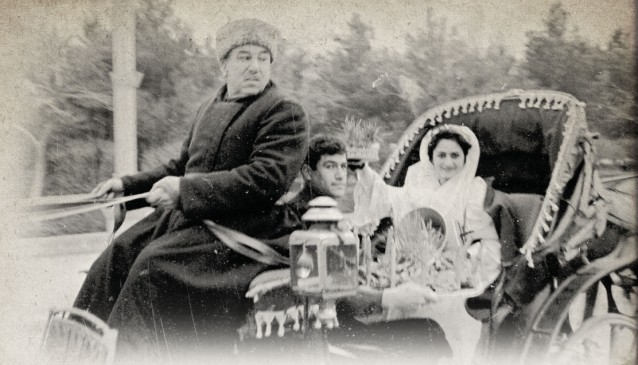
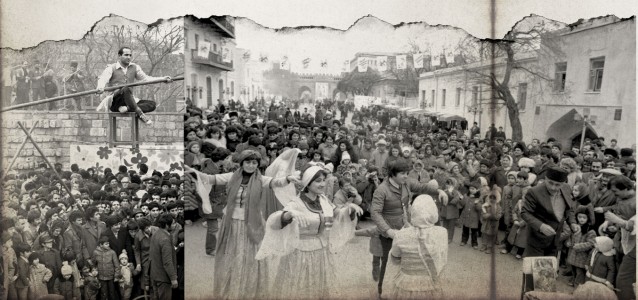
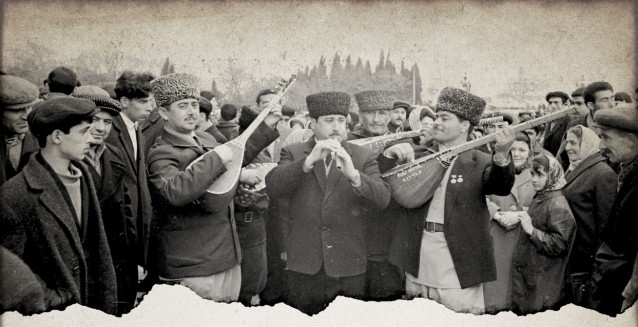
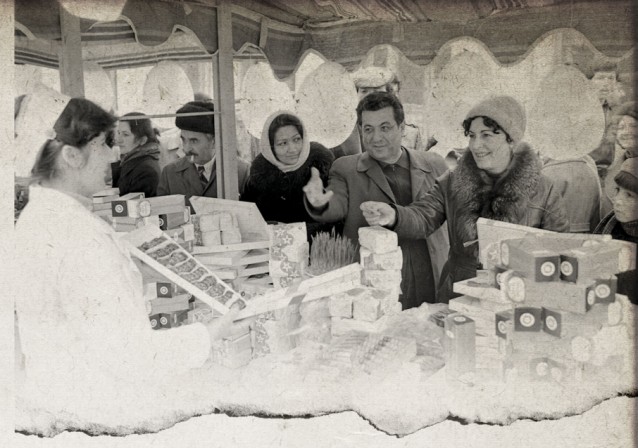
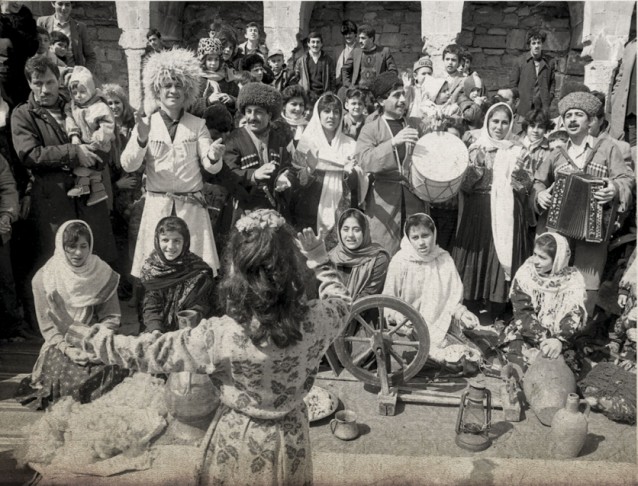


.jpg)